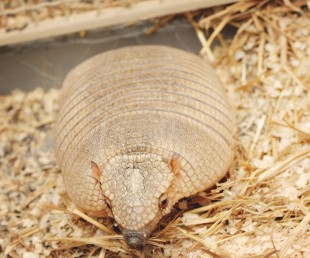Large Hairy Armadillo
Large hairy armadillos are desert animals that do not need to drink water regularly. Like all armadillos, they have thick armor that covers their head, neck and body to protect them from predators.
Range & Habitat
Hairy armadillos live in open areas in semi-deserts, deserts, temperate grasslands and forests of South America, from northern Paraguay to Bolivia to central Argentina.
Conservation Status: Least Concern
Least Concern, however, hunting by humans for sport, food or making instruments may threaten their numbers.
Diet
In the Wild: Invertebrates, maggots, plant matter, carrion, eggs, snakes, lizards, frogs and seed pods. At the Zoo: Insectivore diet, dog chow, canned feline diet, live insects, fruits and vegetables.
Life Span
Fun Facts about the Large Hairy Armadillo
- Large hairy armadillos are also known as Big Hairy Armadillos and Screaming hairy armadillos. The “screaming” part of their name comes because they may emit a squealing noise when threatened. The “hairy” part of their name comes from the hair that covers their stomachs and limbs and protrudes from between their scutes, the bony plates of their “armor.”
- Large hairy armadillos have a protective shell called a carapace that covers their bodies. The carapace has 6 to 8 movable bands that help the animal shield its armor-less stomach for protection.
- The hairs on a Large hairy armadillo are wiry and are used to sense their surroundings through touch, as their eyesight is quite poor.
- Large hairy armadillos have a specialized respiratory system that allows them to breathe while covered in soil without inhaling the soil itself.
Sources
S. (2019, October 03). Screaming hairy armadillo. Retrieved May 07, 2020, from https://nationalzoo.si.edu/animals/screaming-hairy-armadillo
Amaya, J., Zufiaurre, E., Areta, J., & Abba, A. (2019, July 26). Weeping vocalization of the screaming hairy armadillo (Chaetophractus vellerosus), a distress call. Retrieved May 07, 2020, from https://academic.oup.com/jmammal/article-abstract/100/5/1427/5538941?redirectedFrom=fulltext
Screaming Hairy Armadillo. (n.d.). Retrieved May 08, 2020, from http://animalia.bio/screaming-hairy-armadillo



